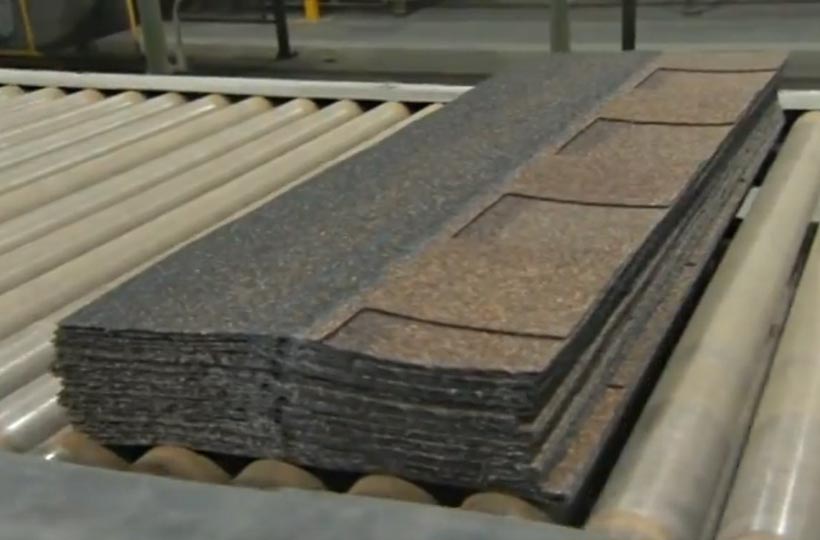If you’ve ever held an asphalt shingle in your hand, you know they are a lot thicker than you might imagine they are. Older 3-tab shingles have made way for thicker laminate shingles that provide more protection. You might wonder, how do they make these asphalt shingles?
Making Filled Coating
To make shingles, CertainTeed starts with high-quality asphalt. This asphalt will end up in the center of the shingle, where it’s water resistance will come in handy.
First, CertainTeed takes the asphalt and combines it with powdered limestone. The manufacturer has rock limestone delivered to its plants, where it uses heavy machinery to crush it into a fine powder. When the limestone is the right texture, it is combined with the asphalt to create a substance called “filled coating.”
Adding the Fiberglass Mat
The bottom of every CertainTeed laminate shingle is a fiberglass mat. This is an extremely strong material that still has the flexibility to bend, even in cold conditions. Fiberglass mats are ideal bases for asphalt shingles because of their balance of flexibility and strength. You can walk on a fiberglass mat, and it resists impact, like from hail.
The filled coating is super-heated to 400 degrees Fahrenheit, and then applied to the fiberglass mat. CertainTeed uses water to cool the mats before they move onto the next step.
Granules and Sealant
So far, we have an asphalt-covered fiberglass mat that can resist water, but doesn’t look very pretty. To make the shingle more appealing and to add some other weather-resistant characteristics, CertainTeed needs to add shingle granules.
Shingle granules are made of tiny pieces of mined rock, covered in a special ceramic coating. The ceramic coating is colored first, to impart a color on the shingles. The granules are embedded into the top of the shingles, and should maintain their color for the whole life of the shingle.
It may interest you to know that some of these granules may fall out of the shingle in the first few days it is on your roof. Most will remain and the shedding will stop, until the shingle reaches the end of it’s lifespan, when more may fall out again.
Next in the manufacturing process is the sealant. The shingles are flipped over, and a strip of sealant is applied to the back. This adhesive will help the shingles bond together and to the roof, so that they don’t blow off in the wind.
Cutting and Packaging
The shingles are created as one long strip that is just as long as the original fiberglass mat. CertainTeed has to use specialized cutting machines to cut each shingle to precisely the same size.
Afterwards, a quality assurance inspector will examine the shingles to be sure they are up to scruff. Shingles may be removed from the line and tested to be sure they live up to CertainTeed’s high quality standards.
Lastly, another specialized machine gathers up several shingles and packages them in a bundle. That’s how they stay until your roofer purchases them to put them up on your roof.

